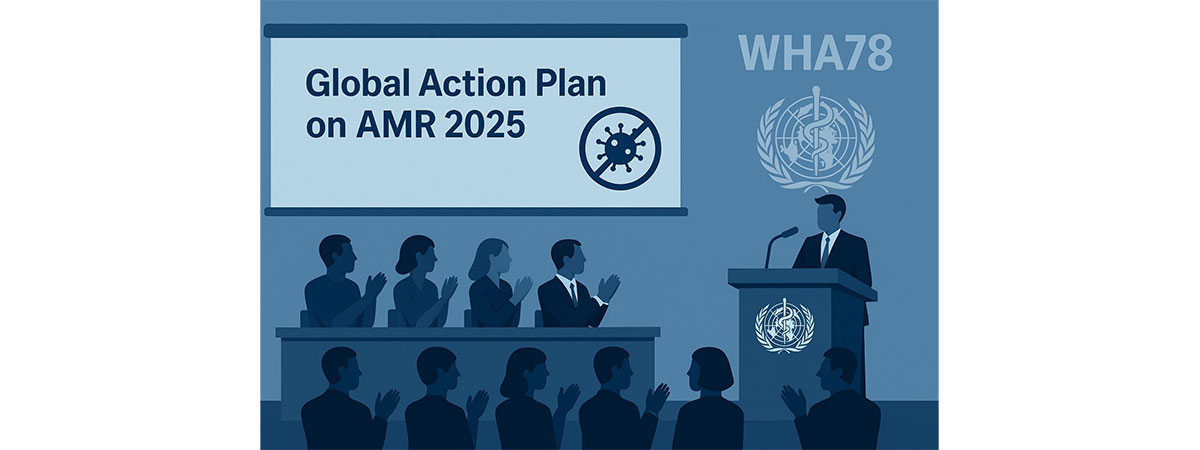Patients Applaud WHA78 Decision to Strengthen Global Action on Antimicrobial Resistance
The WPA welcomes the decision made at the Seventy-eighth World Health Assembly 2025 (WHA78) to update the Global Action Plan (GAP) on antimicrobial resistance (AMR), marking a critical step forward in the global response to one of the most urgent public health threats facing patients worldwide.
With an estimated 4.71 million deaths associated with bacterial AMR as of 2021, patients across the globe continue to bear the brunt of ineffective treatments, prolonged illnesses, increased healthcare costs, and loss of life due to resistant infections. The decision to revise the Global Action Plan provides a long-overdue opportunity to better align global strategies with the growing threat of AMR and to put patients at the heart of that response.
A 10-Year Plan with Patients in Mind
The revised Global Action Plan, to be presented at WHA79 in 2026, will serve as a practical framework for the next decade and is aligned with the targets set in the 2024 UN High-Level Meeting political declaration on AMR including an ambitious but essential goal to reduce global AMR-related deaths by 10% by 2030.
The WPA strongly supports this target and calls on governments, healthcare systems, and industry to ensure that patients are central to the development, implementation, and monitoring of this plan. Access to timely, affordable, and appropriate antimicrobial treatments remains a critical need for millions, particularly in low- and middle-income countries where the burden of AMR is highest.
The One Health Approach: A Holistic View with Human Health at Its Core
WPA supports the updated GAP’s emphasis on a One Health approach — recognizing that the health of people, animals, and the environment are interconnected. We urge the WHO and its Quadripartite partners (FAO, UNEP, WOAH) to ensure that patient perspectives remain integral throughout the consultation and drafting process.
Patients, as end users of antimicrobial therapies, offer unique insights into access barriers, treatment failures, and the importance of public awareness and behavioral change. Any plan that aims to tackle AMR must involve patients as partners, not just recipients of care.
Building on Progress: From Plans to Practice
Since the adoption of the first GAP in 2015, over 170 countries have created national AMR action plans. However, many remain underfunded or unevenly implemented. The updated GAP must prioritize not just planning, but concrete action including:
Improved infection prevention and control measures at all levels of healthcare;
Universal access to affordable diagnostics and effective antibiotics;
Increased investment in AMR research and innovation;
Public awareness campaigns that engage patients and communities directly;
Sustainable financing mechanisms to ensure long-term implementation.
WPA’s Commitment
The WPA remains committed to working with WHO, Member States, and other stakeholders to ensure that patients have a seat at the table as the GAP is updated. We will advocate for strong accountability mechanisms, inclusive consultation processes, and country level strategies that reflect real world patient experiences.
AMR is not just a scientific or regulatory challenge; it is a deeply human issue. Behind every statistic is a patient, a caregiver, and a story of suffering that could often have been prevented. As the global community moves toward the next decade of AMR action, we must ensure those voices are heard and valued.


